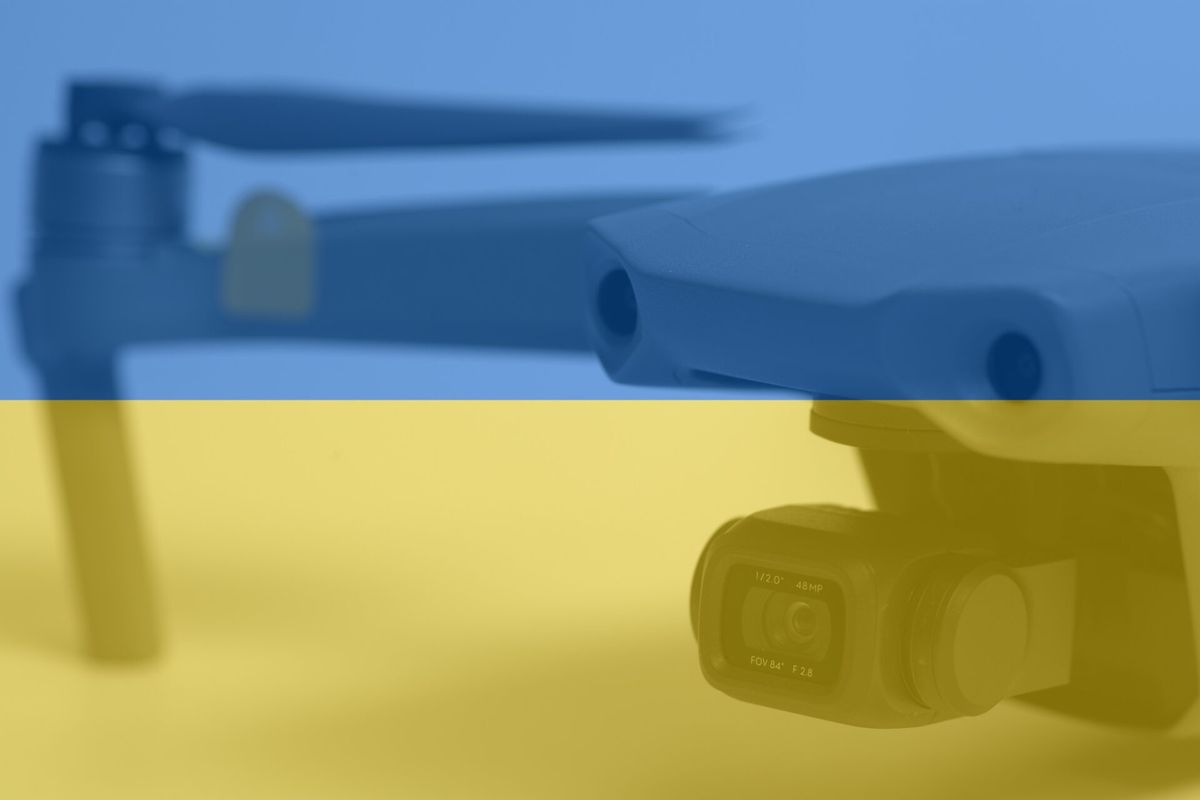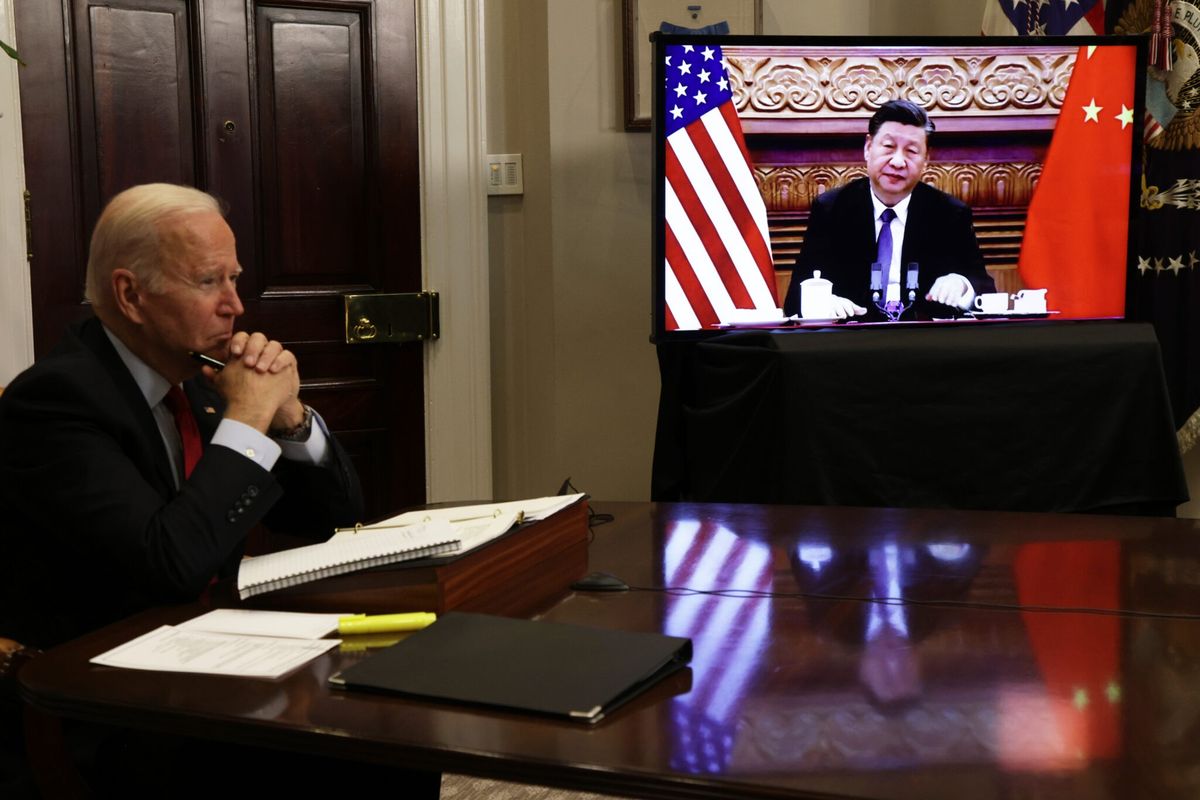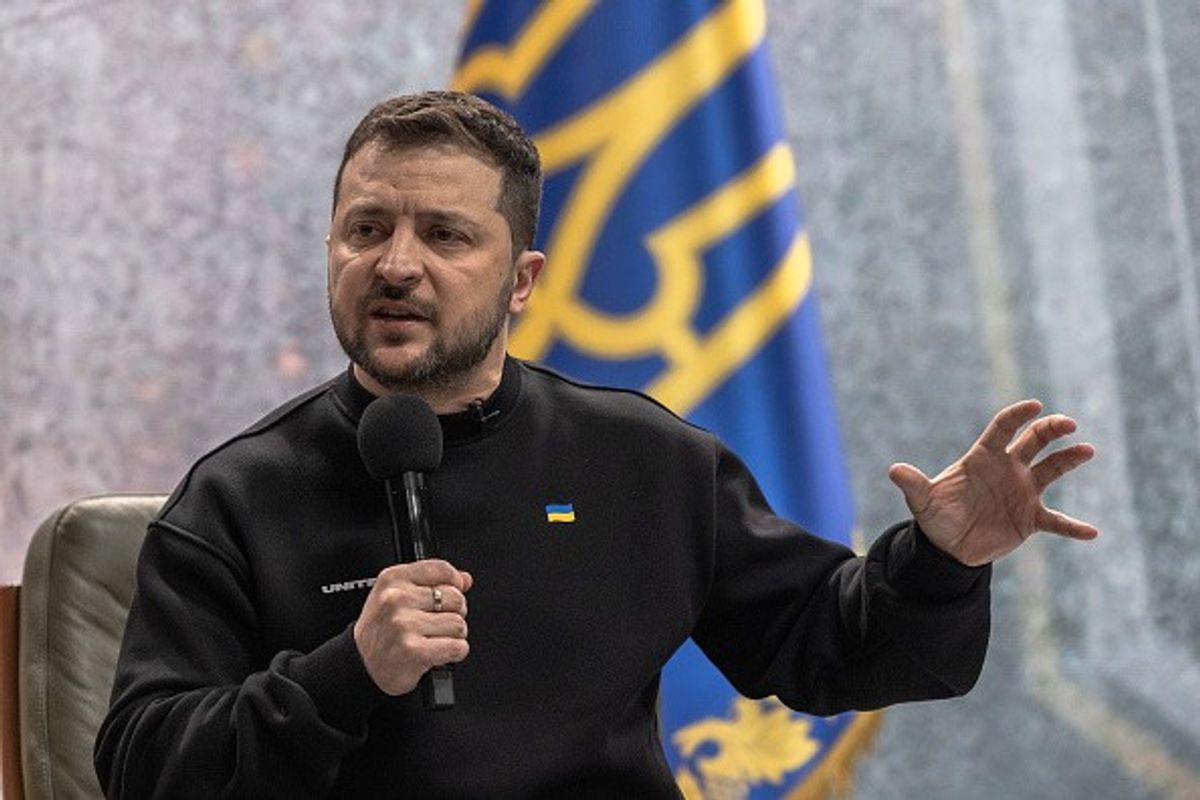EXPERT PERSPECTIVE: Superlatives have been piling up about a weapon of war that’s been around for decades, but has taken on new prominence across the battlefields in Ukraine. Perhaps The New York Times put it best in an editorial that said, “All wars have their iconic weapons, from the AK-47 to the IED. In Ukraine, it’s the drone.”
Since Russia launched its invasion of Ukraine in late February, a remarkable range of drones have entered the battlespace, from small, unsophisticated models available to anyone on the open market, to far more complex technologies, well suited to demanding military missions.
The aerial platforms are available to both sides in the conflict, although visibility into Russian uses and successes is far more limited than the broad coverage given Ukraine’s exploits. It seems reasonable, however, that Russian forces have found the same expansive range of military utility as Ukraine. These uses fall into three broad categories — intelligence (reconnaissance, surveillance, video corroboration); direct attack; and tactical support to targeting and troop maneuver.
A fourth, less obvious application, has been drone technology’s role in shaping and influencing public opinion of the war itself. Drone-provided videos of Russian tank destruction and aerial harassment of troop concentrations have become staples of social media platforms, especially Twitter. Drone footage has been used to document the horrifying effects of Russian artillery barrages on civilian structures and populations, and has provided compelling visual evidence of Russian troop atrocities, including apparent unprovoked gunfire directed at civilians.
These are some of the key considerations of a technology that boasts inherent advantages over conventional airborne systems — relative low cost, maneuverability and detection-evasion in contested airspace, mission versatility, and low overhead for training and maintenance, among others.
In the first of a three-part series on drones and their growing military and commercial applications, The Cipher Brief turned to experts in military drone/UAV technology for their thoughts on how these aerial platforms are impacting the battle space in Ukraine.
Gregory Sanders, Deputy Director and Fellow, Defense-Industrial Initiatives Group, Center for Strategic and International Studies (CSIS)
Gregory Sanders is Deputy Director and Fellow with the Defense-Industrial Initiatives Group at the Center for Strategic and International Studies (CSIS), where he manages a research team that analyzes data on U.S. government contract spending and other budget and acquisition issues.
Samuel Bendett, Adviser with CNA Strategy, Policy, Plans and Programs Center (SP3), Member of the Russia Studies Program.
Samuel Bendett is an Adviser with CNA Strategy, Policy, Plans and Programs Center (SP3), and is a member of their Russia Studies Program. He is also an Adjunct Senior Fellow at the Center for a New American Security. His work involves research on the Russian defense and technology developments, unmanned and autonomous military systems and artificial intelligence.
The Cipher Brief: How do you assess the role and impact of drone/UAV technology on the battlefield in Ukraine? What shortcomings or gaps do drones fill in military tactics and strategies?
Sanders: Drone/UAV technology has contributed to support intelligence, surveillance, and reconnaissance (ISR) and targeting, including direct attacks by UAVs bearing weapons or loitering munitions. This, alongside missiles and munitions, proved especially valuable in the early stages of the war where Russia overreached, sent in tanks without sufficient support, and was stymied by a range of logistic difficulties. It has been argued that, in addition to sending in more UAVs overall in the early stages of the conflict, Ukrainian forces integrated UAVs more effectively, exploring the potential of the technology. UAVs have also been value for rapid adoption an experimentation by Ukrainian forces. Ukraine cultivated its own commercial UAV production base after 2014 and alongside satellite and software support, this appears to be an area where commercial technology is well suited to agile response. Commercial ISR may also be well suited to the home field advantage, as shown in Ukrainian anecdotes regarding young scouts that were able to enable targeting of Russian weapon platforms.
These advantages, including the ease of use of both commercial and military drones as well as certain munitions like the much-vaunted Javelin is meaningful, but unsurprisingly overhyped. The end of the era of the tank was never plausible and quickly discredited as the war moved to the next phase. This is not to say that there are not real advantages over conventional systems, as my colleague Mark Cancian has noted many traditional military technologies either require a logistic tail and advanced training or weeks or months of training to effectively employ. However, that logistic tail and training is ultimately necessary to respond in a conventional manner to the mass of fire that Russia is able to bring to bear now that it has narrowed its ambitions. Drones helped buy valuable time and push back the attempt to conquer Kyiv and are being usefully integrated into warfighting approaches, but have not made older technology obsolete.
Bendett: We're seeing a lot of the technologies that both Russians and the Ukrainians advertised before the war. Russian military advertised an entire lineup of drones for ISR, combat, target recognition, as well as electronic warfare. A lot of these drones, especially in ISR capacity, were part of the Russian concept of reconnaissance, where drones are a key part of targeting and essentially provide the eyes and ears in the air and transmit information in real time to artillery, multiple launch rocket systems and other assets. We're seeing all of that in Ukraine.
We're seeing all of that in Ukraine from the Russian side. We're also seeing Ukrainians actually using the same tactic very successfully against the Russians. Another significant factor in this war — something that has been discussed at length — is the mass scale use of commercial drones, and there's multiple reasons for that. Obviously the Ukrainians are using whatever they can get their hands on. For the Russians, they talked earlier about acquiring Quadrocopters and small drones for ISR, but it wasn't clear to what extent this was actually implemented across all services, to what extent a lot of their units actually received the Quadrocopters as they intended.
Now, we're seeing volunteers, especially Russian allies in the Donbas, basically fund-raise and get a lot of these drones via volunteers. They use them for ISR. Most of these are commercial DGI, Chinese-made drones. They have a short range or a relatively short range. They are purely commercial, and therefore they do not feature some of the counter measures that some of the military drones feature.
The Cipher Brief: While offensive uses of drones are obvious, it may be more difficult to assess their impact on defensive strategies. Will unmanned aerial platforms prove to be decisive elements in Ukraine, and how will they — and countermeasures to defeat them — shape battles for years to come?
Sanders: I think the failure of Russia to suppress enemy air defenses has interesting implications for UAVs. The Turkish TB2 drone and many of the U.S. drones that are not stealth or especially high flying have remained very relevant not just in the Nagorno-Karabakh conflict but even in a conflict that involves a near peer competitor of the U.S. Those lessons may not transfer to a conflict with China, but this does signal that countermeasures against even less survivable drones, not just those coming in highly attributable form or stealthy model, will be an increasing preoccupation against both high end and low end challengers.
In our current research, we are looking at the more commercially oriented nature of even military UASes and whether they will allow for faster adaptation in the future and have easier to sustain industrial bases than the more military oriented missile and munitions sector. The latter has been a subject for concern in DoD supply chain studies and competition reports. The ability of the industrial base to create UAS' at scale and responsively to the shifting needs of the battlefield will be key for shaping determining the magnitude needed for defensive and countermeasures.
Bendett: Well, some units cannot respond, because they can't see the Quadrocopter until it's too late. They can't see a UAV directing artillery to targets, because it's at a distance, and they can't quite get to it. This type of warfare today showcases the importance of counter UAV and electronic warfare technologies. Something that the Russians, prior to the war, bragged that they were really, really good at. For example, they were not really afraid of Bayraktar drones because they felt and stated on a number of occasions that their layered air defenses, their radars and their electronic warfare can identify, jam or down this UAV. It's a different picture for smaller UAVs that are buzzing overhead, but the Russians claimed that they were maintaining counter UAVs and electronic warfare training to deal with this type of persistent threat.
As we have seen in the war, when the front is very large, when a lot of forces are used, when it's a very grueling, complicated battlefield picture, when there's a fog of war, when there's lots of casualties, it's very difficult to implement these technologies everywhere. As I mentioned earlier, Russians are good at actually using EW against small drones in certain locations, but not everywhere, and probably the same goes for the Ukrainians.
It's very difficult to counter reconnaissance fire and reconnaissance strike contour because a UAV could be flying several miles away from your location, but it would be able to identify your location from several miles away through its sophisticated sensors, and then guide artillery and multiple launch rocket systems to it. Obviously, this type of warfare also points to the importance of layered defense that Russians advertise they actually possessed.
That is, sophisticated radars to identify an aerial asset, whether it's an aircraft, a helicopter or a drone, sophisticated EW systems to jam and disrupt communications. If all else fails, once that drone has been identified at any distance away, then it's shot down by a number of kinetic systems. This is what Russians said they had in Syria. They implemented this layered defense against very simple DIY types of drones that were launched at them, but they never really implemented this against more sophisticated drones, and certainly not against the type of drones that Ukraine wants to get from the Americans.
Prior to the war, all sides conducted extensive preparations. Russian forces have been learning from their experience in Syria and now going to Karabakh, and they were monitoring NATO assets patrolling the border near Russia, including via UAVs. Ukrainians have been very good students of their losses in 2014 and 2015, and they've been training as well. Underlying all of this is the use and evolution of new technologies by all belligerents, including UAVs and unmanned systems, which are very significant, cheap and available ISR assets.
Today’s constant barrage of information makes it easy for countries to wage disinformation campaigns and your emotions are the weapon of choice. Learn how disinformation works and how we can fight it in this short video. This is one link you can feel good about sharing.















